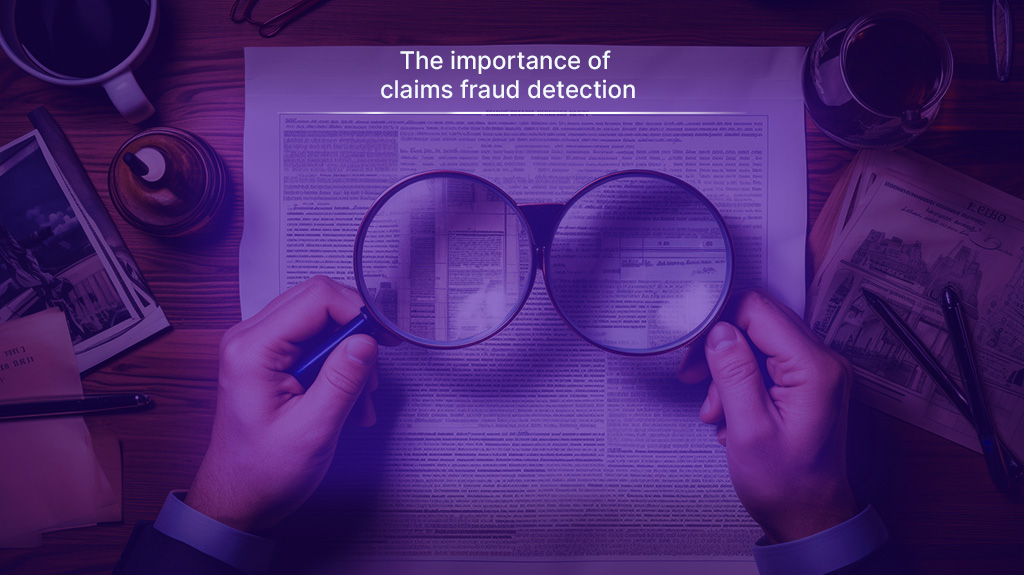Insurance fraud is a huge problem, and it's only getting worse. Insurance companies are struggling to keep up with the sheer volume of fraudulent claims. But the mix of insurance claims and social media can give insurers unique insight into potential fraud.
Criminals are increasing the sophistication of fraudulent insurance claims, and social media can be the most crucial factor insurers need to improve their fraud detection capabilities. Read on to learn about some of the most promising alternative data sources for insurance fraud detection and how they can be used to help insurers combat this growing problem.
The Current State of Claim Fraud Detection and The Cost Implication Of Ineffective Solutions
Fraud detection is a never-ending battle of wits between those committing fraud and those tasked with investigating it. As fraud detection technology advances, so too do the methods used by fraudsters. This creates an ever-evolving landscape in which both sides constantly try to outsmart each other.
The cost implications of ineffective fraud detection solutions are significant to insurers and their customers.
There's no line with fraudsters, and the US government is considered fair game to them, with the latter losing an estimated $7.9 billion in 2019 alone to fraud actors.
In the private sector, insurers and their customers lose approximately $80 billion annually to fraud. Medical insurance fraud contributes a staggering $60 billion loss yearly to the total amount lost to fraud.
In most cases, this pans out as either of these two general options:
- Insurers implement more fraud detection checks to curb fraud. This may compromise user experience due to delayed claim resolution.
- Insurers pass on the cost of risk to consumers in the form of costly premiums.
Either way, the resulting effect is insurers lose out on competitiveness in an already cut-throat market.
There are various reasons why the efforts of current fraud analytics in insurance are falling short. One big problem is that they tend to be reactive rather than proactive. That is, they only start looking into suspicious activity after it has already happened.
Another issue is that many solutions rely on manual data entry and analysis. This is both time-consuming and prone to error. Moreover, with so much data to sift through, it's easy for important clues to be missed.
For this reason, insurers should seriously consider automated fraud detection tools that can access and analyze data from alternative and conventional sources.
How Limited Data Sources Hamper Effective Insurance Fraud Detection
There are several reasons for this limited data. First, insurance companies have increasingly relied on third-party data sources, such as claims databases, to detect fraud. However, these data sources are often incomplete and inaccurate.
Second, insurance companies have been slow to adopt new data sources that could be used to detect fraud. For example, many insurers still do not use social media or alternative credit data when screening applicants for insurance.
Third, the insurance industry has lagged behind other sectors in using data analytics and machine learning to detect fraud. While these technologies hold great promise for detecting fraud, they require large amounts of data to be effective. But most insurers do not have access to the necessary data.
The limited data pool's low quality and unverified authenticity is a key (but less spoken about) factor. While it's common for some people to falsify records, sophisticated fraud actors take this a notch higher by actively falsifying records used to purchase policies and in fraudulent claims — on a larger scale.
So insurers may have the data, but there's a possibility that it's doctored to facilitate fraud. The limited data sources exacerbate the matter further, as there's no way for insurers to confirm the authenticity of the data they have conclusively.
Social Media Fraud Monitoring: How Alternative Data Sources and Other Investigative Tools Can Help Curb Fraud

For most people, including fraud perpetrators, social media is a platform for sharing personal information and connecting with friends. Such scenarios, when people drop their guard (albeit unknowingly), are a prime opportunity for insurers keen on curbing fraud to glean insights that wouldn't otherwise appear on conventional data sources.
There's a growing sophistication of fraudulent insurance claims, and social media can be used as an additional data source to improve insurance fraud detection.
For example, insurers can use advanced data mining techniques to analyze social media posts and identify patterns that may be indicative of fraudulent behavior. Additionally, insurers can use social media to monitor customer behavior and look for any red flags that could suggest fraudulent activity.
Furthermore, insurers can use social media to help verify customer information. For instance, if a customer claims to have been the victim of a burglary, insurers can check their social media posts to see if they have mentioned the incident. If insurance claims and social media posts have contradictory information, insurers can flag it for further investigation.
It's crucial that insurers quickly resolve insurance claims, and social media can be a valuable tool for insurers to detect insurance fraud. Insurers can improve their fraud detection capabilities and protect themselves against fraudulent claims using this alternative data source.
Using Artificial Intelligence to Monitor Insurance Claims and Social Media
Another interesting development that can help insurers shift the tide is the increased options in Artificial Intelligence (AI) and Machine Learning (ML) powered fraud detection solutions that can handle the data of insurance claims and social media.
Some of the reasons why these revolutionary solutions are effective for fraud analytics in insurance include:
- The ability to consolidate different data sources
- Enhanced speed and performance since software doesn't feel fatigue
- Built-in lifelong or continuous learning, meaning insurers' fraud detection capabilities improves significantly over time and with continued use
- Pattern recognition capabilities that can help insurers be more proactive in curbing fraud, even before it happens
Final Thoughts on Insurance Claims and Social Media
To effectively detect insurance fraud, it is essential to have access to multiple data sources. The more available and relevant the data, the easier it will be to identify patterns and trends that may be indicative of fraud.
When it's hard to effectively curb fraudulent insurance claims and social media may be the missing link, AI solutions make all the difference. Insurance companies should prioritize investing in insurance fraud detection solutions that effectively utilize conventional and alternative data sources to protect them and their customers from fraudulent activity.
Get started with Pilotbird's fraud analytics insurance solutions and experience the revolutionary benefits of better fraud detection capabilities. Read more on our fraud monitoring thought leadership in our blog.
References
"Fraud Stats - Insurancefraud.Org". Insurancefraud.Org, 2022, https://insurancefraud.org/fraud-stats/.
"Insurance Fraud | Federal Bureau Of Investigation." Federal Bureau Of Investigation, 2022, https://www.fbi.gov/stats-services/publications/insurance-fraud.
"Social Media Conditions People To Let Their Guard Down." Global Tech Solutions, 2022, https://www.globalts.com/blog/social-media-conditions-people-to-let-their-guard-down.
"Social Security Fraud: What Is It Costing Taxpayers?". Investopedia, 2022, https://www.investopedia.com/articles/retirement/120516/social-security-fraud-what-it-costing-taxpayers.asp#citation-6.
Eaton, Joe. "Medicare Fraud, Medical Identity Theft And Scams." AARP, 2022, https://www.aarp.org/money/scams-fraud/info-2018/medicare-scams-fraud-identity-theft.html.
Metz, Jason. "Pandemic Fires Up Insurance Fraud, Here'S What To Watch For." Forbes Advisor, 2022, https://www.forbes.com/advisor/car-insurance/pandemic-insurance-fraud/.





Leave a Comment
Your email address will not be published. Required fields are marked *